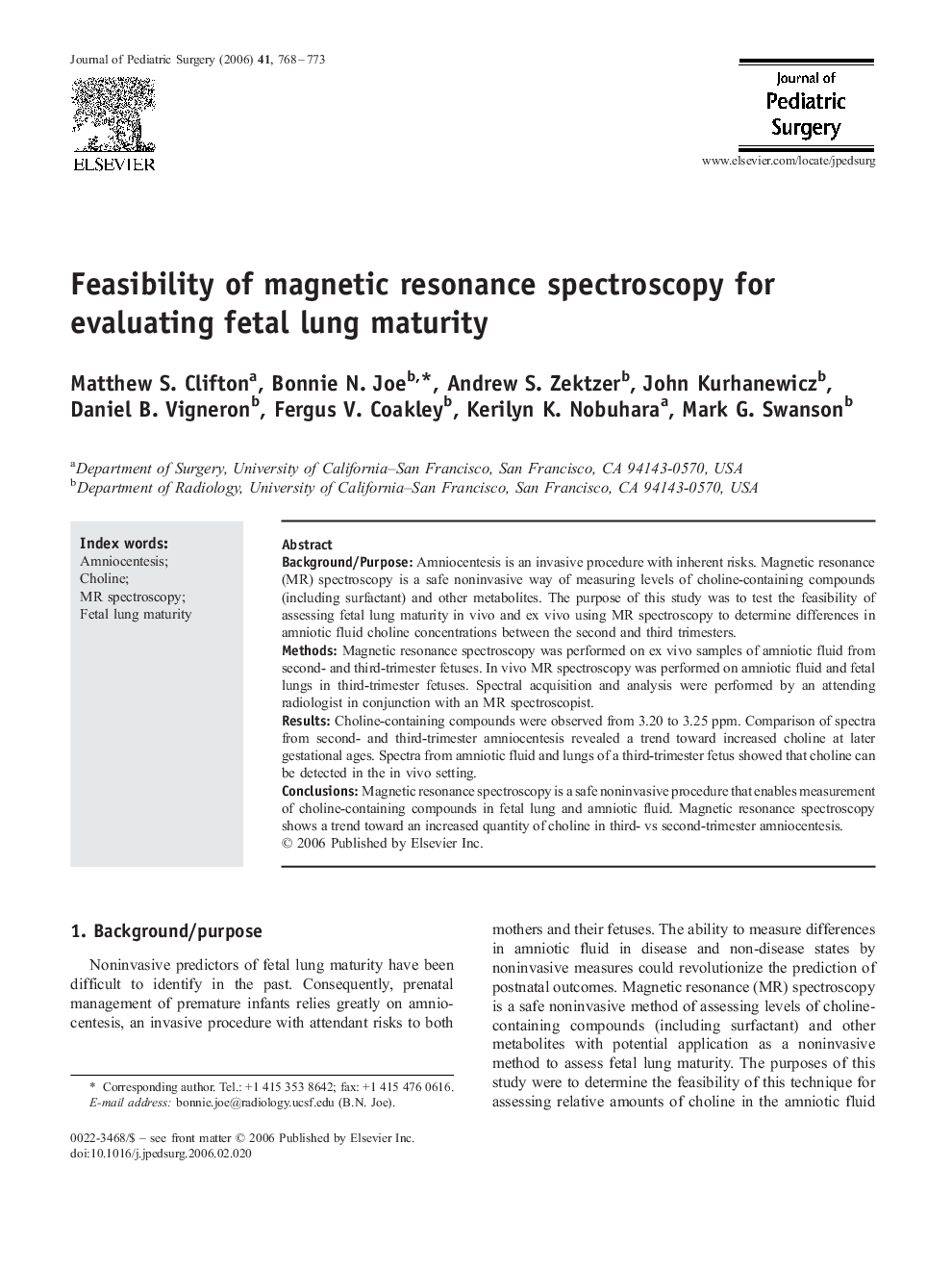| Article ID | Journal | Published Year | Pages | File Type |
|---|---|---|---|---|
| 4160611 | Journal of Pediatric Surgery | 2006 | 6 Pages |
Background/PurposeAmniocentesis is an invasive procedure with inherent risks. Magnetic resonance (MR) spectroscopy is a safe noninvasive way of measuring levels of choline-containing compounds (including surfactant) and other metabolites. The purpose of this study was to test the feasibility of assessing fetal lung maturity in vivo and ex vivo using MR spectroscopy to determine differences in amniotic fluid choline concentrations between the second and third trimesters.MethodsMagnetic resonance spectroscopy was performed on ex vivo samples of amniotic fluid from second- and third-trimester fetuses. In vivo MR spectroscopy was performed on amniotic fluid and fetal lungs in third-trimester fetuses. Spectral acquisition and analysis were performed by an attending radiologist in conjunction with an MR spectroscopist.ResultsCholine-containing compounds were observed from 3.20 to 3.25 ppm. Comparison of spectra from second- and third-trimester amniocentesis revealed a trend toward increased choline at later gestational ages. Spectra from amniotic fluid and lungs of a third-trimester fetus showed that choline can be detected in the in vivo setting.ConclusionsMagnetic resonance spectroscopy is a safe noninvasive procedure that enables measurement of choline-containing compounds in fetal lung and amniotic fluid. Magnetic resonance spectroscopy shows a trend toward an increased quantity of choline in third- vs second-trimester amniocentesis.
